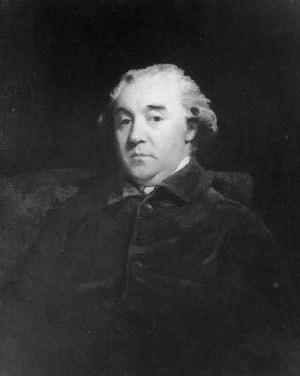William Burke
(1729-1798)
William Burke was a political writer and an administrator, the eldest son of John Burke (d.1764) and Elizabeth Burke. He attended Westminster School in September 1742 and in 1743 was elected king’s scholar. He studied law in the Middle Temple at London in 1850, graduating with a Bachelor of Civil Law from Oxford University in 1755. Although he was called to the bar, he never practised law.
He served in the post of secretary and register of Guadeloupe in 1760-61. William Burke began writing letters to newspapers in 1765 and within the next decade submitted at least six letters and collaborated on 45 others. Burke became under-secretary of state to General Henry Seymour Conway, secretary of state for the southern department in July 1765. Ralph Verney secured a seat for William at Great Bedwyn, and he spoke frequently in the House of Commons. He remained in office with General Henry Seymour Conway in the northern department until 1868, when he returned to Great Bedwyn. He was one of the twenty most frequent speakers in the House of Commons between 1768 and 1774. Because he was unable to pay to retain his Commons seat, he was without a seat and lost his parliamentary immunity from his creditors. When the governor George Baron Bigot died in Madras in 1777, Burke was secured a post of agent, and became an effective ambassador. He left for India in September of 1780 and while there, in 1784, Earle Verney calculated that William owed him £20,000 and in order to pay some of William’s debts his salary payments were drawn in Britain by Edmund Burke’s son.
In 1793 William returned to Britain and returned to writing, however in the autumn of 1795 his health began to decline and in December of that same year he was arrested for the rest of the debt he owed to Verney. Edmund arranged for William to be released on a bond and when he did, he smuggled him to the Isle of Man late 1796, where he would be safe because his debt could not be collected from that location. William Burke remained there until he died in August 1798.
Although there is no known physical association between Vassa and William Burke, Vassa mentions his name on the notes of The Interesting Narrative.
Vassa on Burke in The Interesting Narrative 9th ed.
[Equiano’s note.] Benezet’s Account of Guinea, p. 16. [Equiano’s information comes from pp. 72-80, which, in turn, Benezet acknowledges, is derived from William Burke (1729-1798) and Edmund Burke (1729-1797), An Account of the European Settlements in America (London: 2nd ed., 1758).]
(pg. 271, note 308)
Compare Burke, An Account: ‘I. . . notwithstanding that the climate is in every respect, except that of being more wholesome, exactly resembling the climate from whence they come . . .” (2:124).
(pg. 271, note 309)
RELATED FILES AND IMAGES
REFERENCES
This webpage was last updated on 2022-03-29 by Saloni Pande
